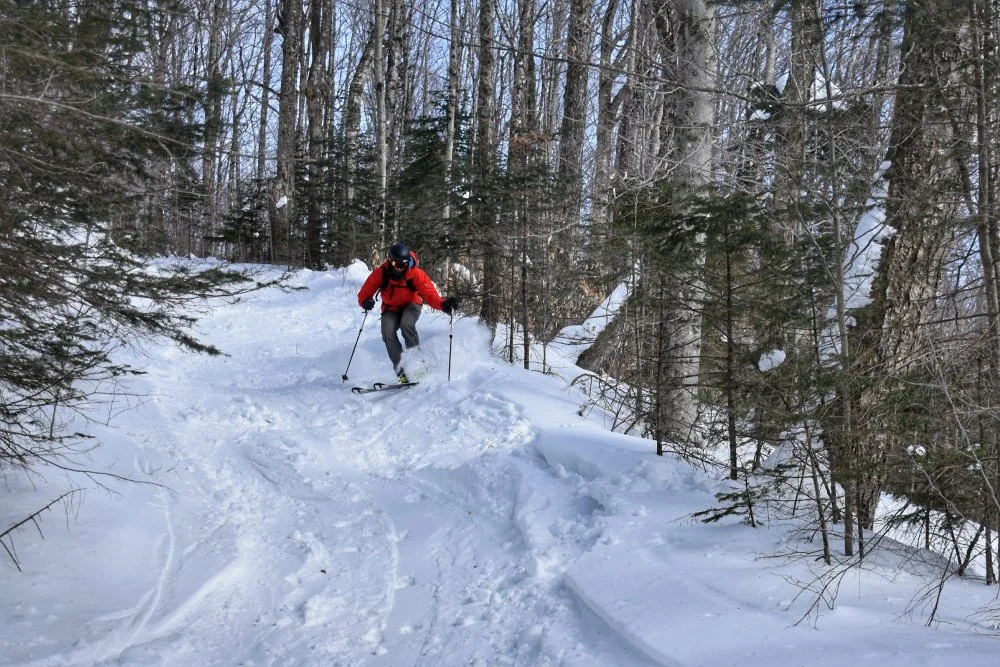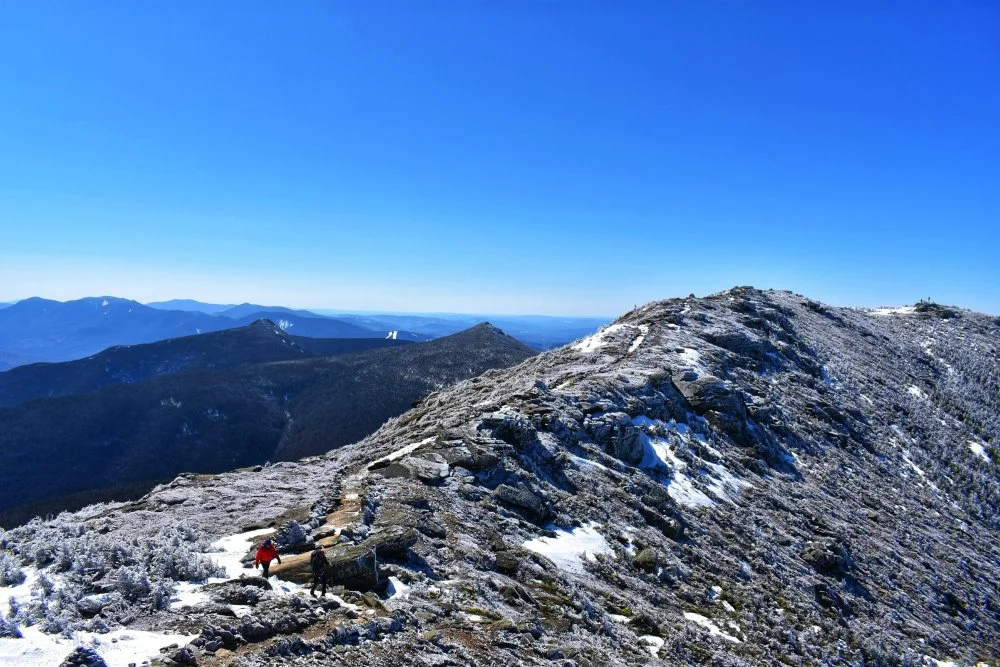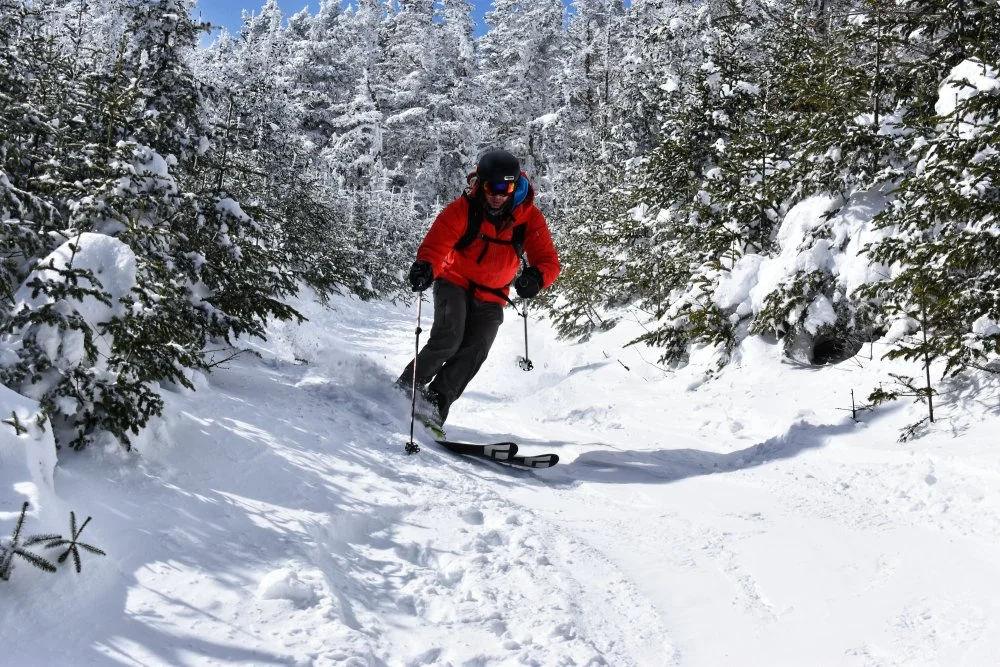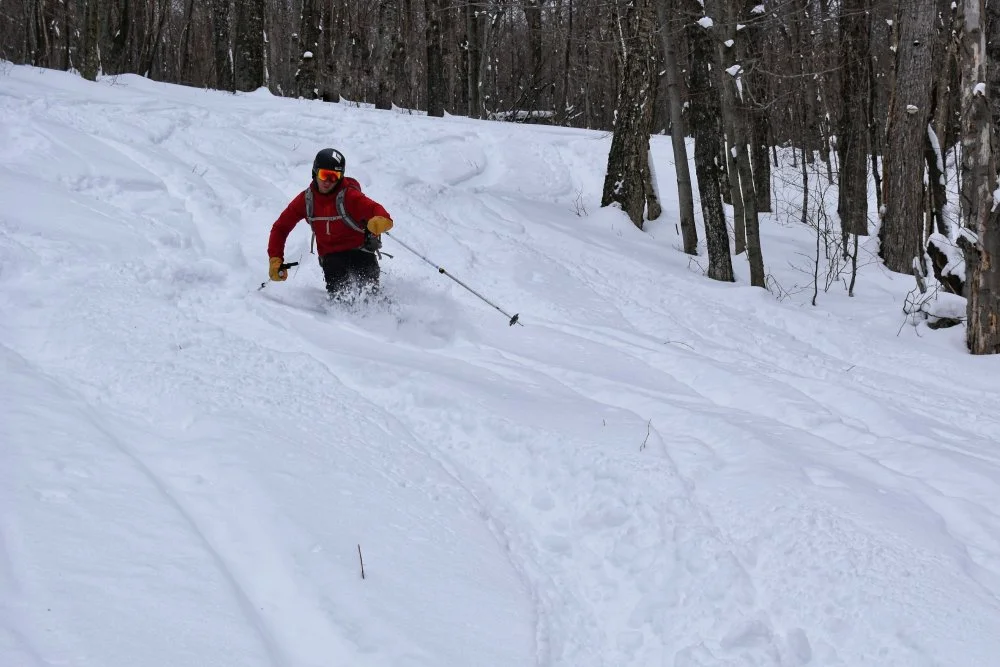Mount Moosilauke Ski Gear List
Skiing Mount Moosilauke’s Carriage Road is a rite of passage for New England backcountry skiers. Never particularly difficult or overly steep, and listed in David Goodman’s seminal book Best Backcountry Skiing in the Northeast: 50 Classic Ski Tours in New England and New York, Moosilauke is often one of the first places that newer backcountry skiers visit. And, if they are like us, they will keep being drawn back by the more than five-mile long descent and above-treeline terrain. While there are plenty of places to get beta on the trip—like this article Tim wrote for goEast—we thought a detailed gear list would be an interesting, informative, and helpful companion. So here it is.
Upper Body Layers:
A lightweight synthetic baselayer top; generally long-sleeved unless it’s really nice out
A lightweight windshirt with a hood; favorites include the Black Diamond Alpine Start and the Outdoor Research Whirlwind
A vest with active insulation; we’ve been using the Outdoor Research Ascendant Vest and Arc’teryx Proton LT Vest
A puffy coat with active insulation; we love the Arc’teryx Proton LT Hoody but also enjoyed our time in the EMS Alpine Ascender (check out our review of the Ascender here)
A traditional lightweight puffy; the Black Diamond Access LT Hoody is a great choice
A hardshell (perfect for fighting off the high winds commonly found above treeline and having just in case the weather takes a turn for the worst); we’ve been using the Arc’teryx Beta SL with success
Lower Body Layers:
Lightweight baselayer pants
Medium-weight windproof softshell pants; the Outdoor Research Valhalla softshell pant has been our go-to choice for years (sadly, OR no longer makes the Valhalla, but their Trailbreaker pant is a reasonable facsimile
Accessories:
A lightweight winter hat
A balaclava
A Buff Neck Gaiter is an awesome addition, as it can serve as a second hat or balaclava in the event one gets wet
Leather work gloves; Black Diamond’s Dirtbag Glove (review) is a long-time favorite
A pair of insulated waterproof gloves
Heavy mittens; Black Diamond Mercury Mitts (review) have been a key part of our kits for years
Lightweight liner gloves are a nice addition as they can add an extra touch of warmth to your other gloves and mittens, and nice to have when you need to use your fingers
Chemical hand warmers (great for emergencies or colder-than-expected temperatures)
Pack:
A 30- to 40-liter pack should be able to accommodate all of your layers, accessories, food, and water, along with your helmet. Separate compartments for skins, avalanche gear (not needed for this trip, but nice to look for in a ski pack), and goggles is a nice touch. We’ve been using the Black Diamond Revelation pack for years, but, when it comes time to upgrade, we’ll be looking at the Black Diamond Dawn Patrol packs.
Footwear:
We prefer a lightweight setup for the 10+ miles up and down Mount Moosilauke; the Dynafit TLT series of boots has worked great for us
Compression socks are a nice way to avoid blisters; we use CEP
Gear:
Skis; you’ll want something light enough that you don’t mind skinning with it for 5 miles and 3,000 feet of elevation gain, but with enough width to float through the occasional powder stash, and enough turning radius to handle when the trail narrows
Bindings; lightweight tech-style bindings are ideal for the terrain found on Moosilauke
Climbing skins; we’ve been abusing Black Diamond’s Ascension skins for years
Adjustable ski poles; Black Diamond’s Traverse Ski Poles are tried and true
Lightweight and packable traction devices that will fit on your ski boots; CAMP’s Chainsen Light is a good choice for navigating Moosilauke’s often icy summit cone
Other Equipment:
Goggles are a must-have for the descent and for dealing with the winds found above treeline
Sunglasses; we like Julbo for their fun colors
A small first aid kit—here’s what we carry.
A small repair kit
A couple of ski straps of varying lengths—think of them as duct tape for skiers
A headlamp…just in case
Food; with a couple good spots to stop out of the weather, we often opt for real food (sandwiches, pizza, cookies) on this trip
A water bottle or thermos (or both); having a thermos of hot chocolate or tea is a great way to warm up on colder days
A map, compass, and phone-based mapping app like GAIA GPS with a pre-programmed route plan
An emergency bivy; if you’re heading out in a bigger group, consider having someone in the party bring a lightweight sleeping bag as well
A packable rescue sled or the stuff needed to make one





